We use two tools as we build HyperTrack.
- A home-grown server-less JS tool called Atlas. It chomps up a stream of location, activity and health events as JSON and spits out a map. After initial load, the JS module updates the stream in real-time and renders it in a Mapbox-Leaflet view.
- The React JS front end of HyperTrack product used by our customers. It consumes a stream of location, activity and health events through a GraphQL end point. After the initial query, the GraphQL client updates the stream on a React-Leaflet view on MapTiler.
Every once in a while, these tools tell us stories that we least expect. Today, we share some of these stories.
I was looking at my location history on an otherwise normal Sunday afternoon in Berkeley. It revealed a dog with a leash tied to pet-friendly Tilden Park and sticking out its tongue to lap up some Indian food at Vik's Chaat Cafe.
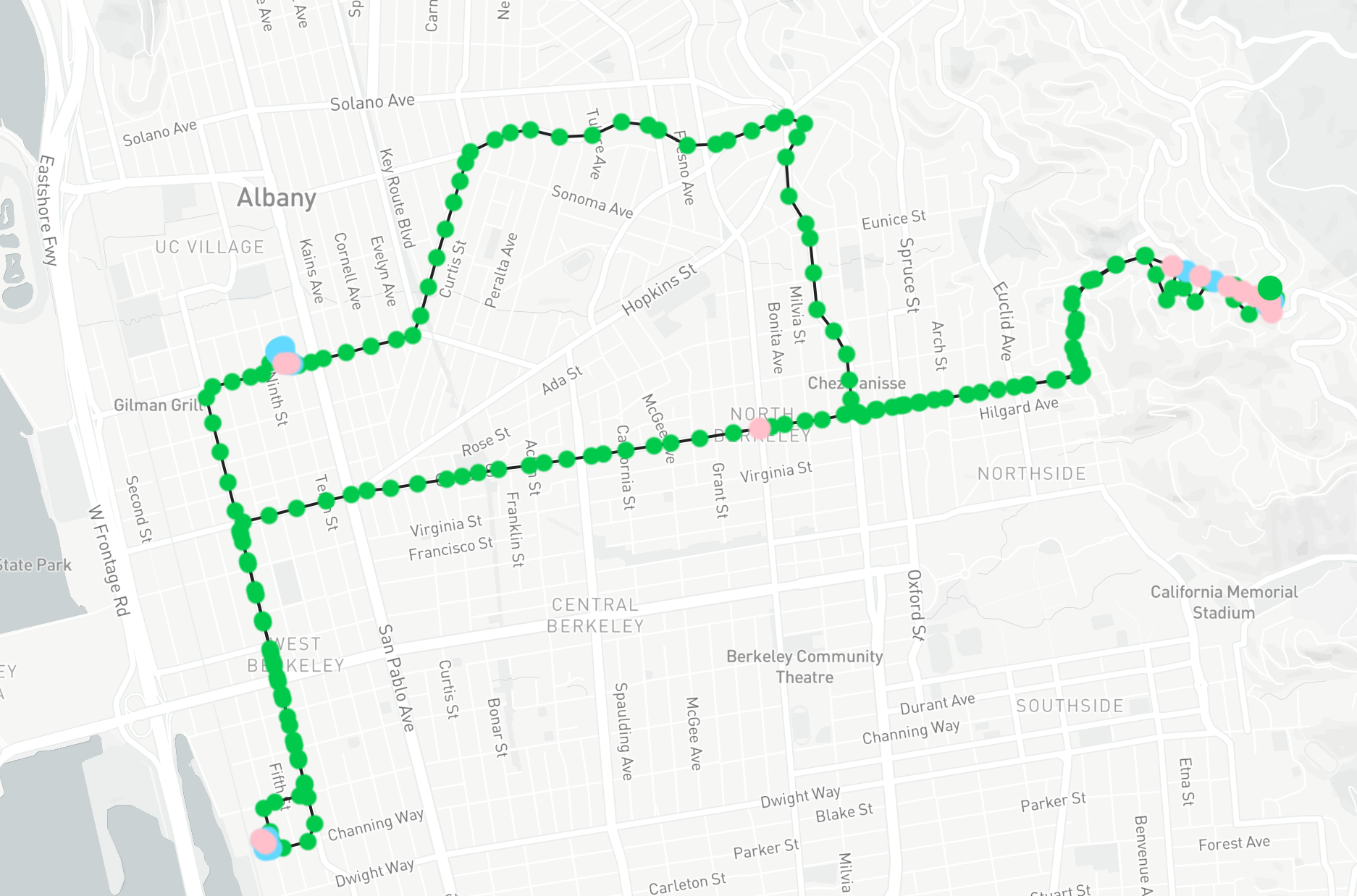
My jaw dropped as I saw my colleague Alex Kishinevsky's tracking history for the same day. It was a higher resolution trace of a wolf sticking out its tongue in San Francisco, as if after slurping up Little Red Riding Hood.
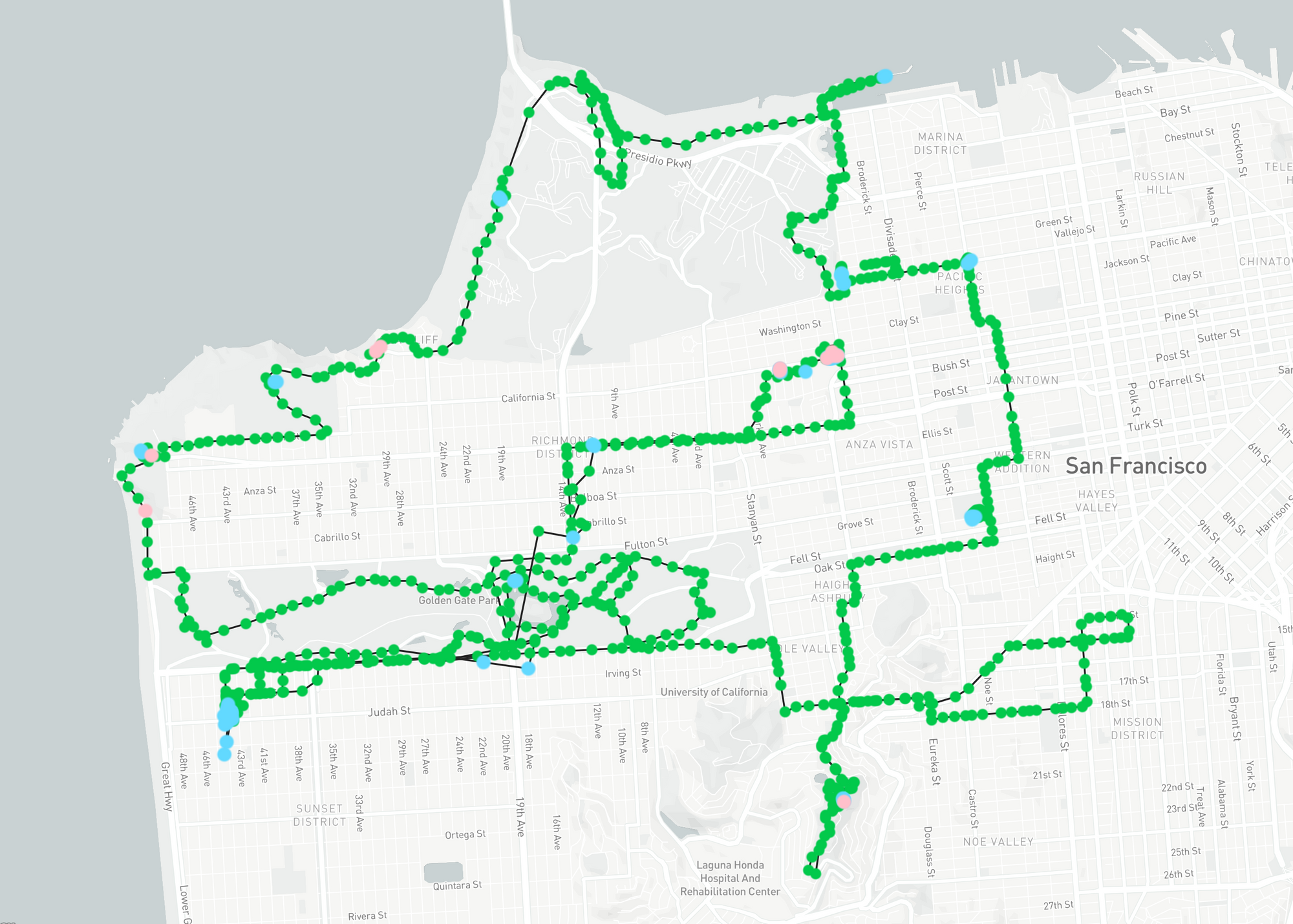
Alex had two phones that day, for testing iOS versus Android, and a part of the same journey showed up as this on Android. Apparently, the lumberjack had already done his work to rescue Little Red Riding Hood from the wolf's tummy.
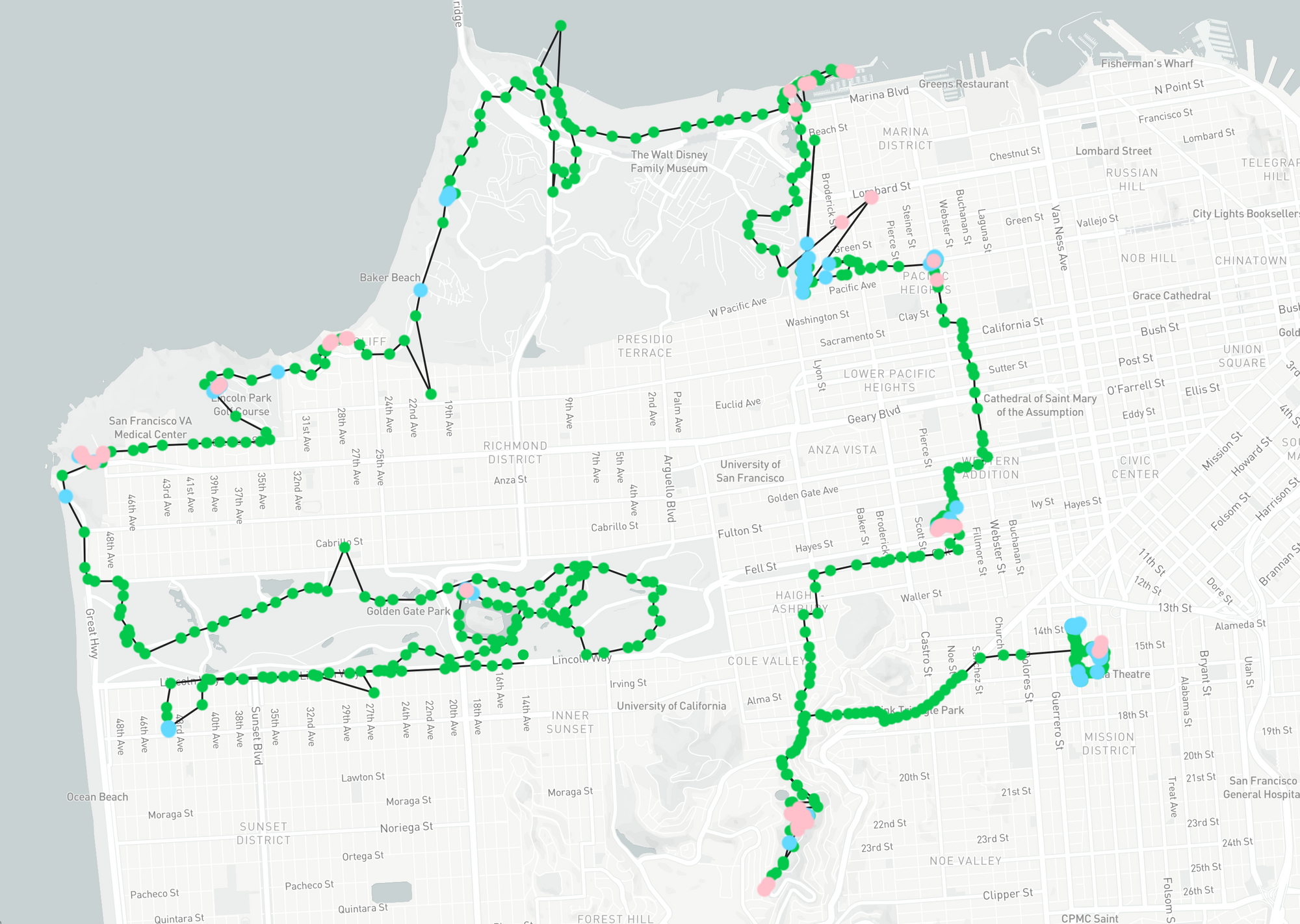
A few months later, it was the cat's turn to sneak into my tracking history on another unsuspecting Sunday. The cat's tail was caught in the Berkeley Marina as the face explored the Botanical Garden of UC Berkeley.
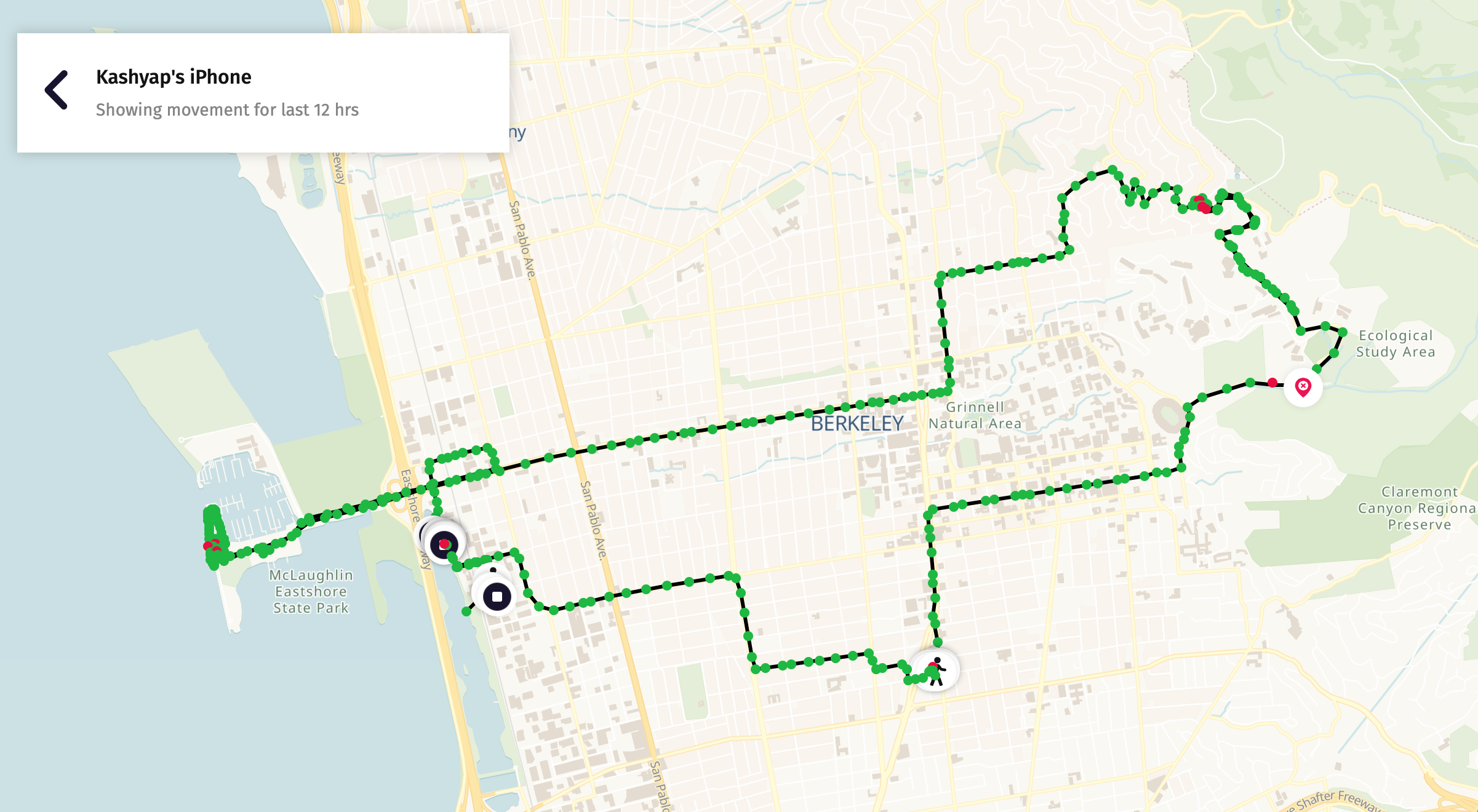
Not many days later, it looked like the cat had turned into a superhero and found a partner. The public display of affection was not lost on me.
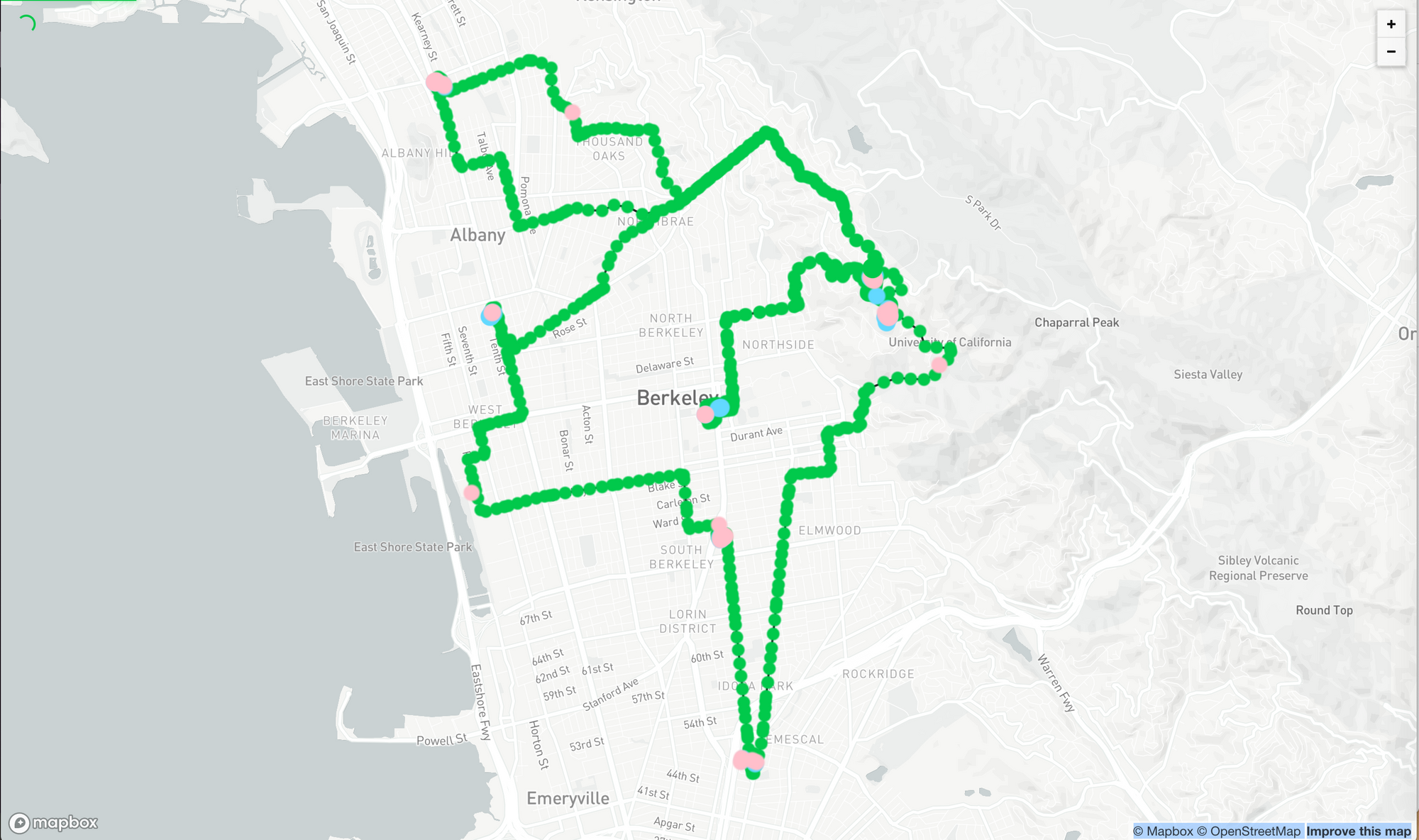
Meanwhile Thomas was at one of his morning runs at Maçka Park during our annual company offsite in Istanbul Turkey. 5 mph is nothing to be ashamed of frankly, but it does seem modest in the face of his claims of running 7 minute miles. The other five colleagues (green dots without bearing) spied from the park benches with their Turkish tea and computed that to be faster than 8 mph.

Thomas surprised us all by going for a swim in the Bosphorous right after, or so it seemed at the time. He claimed it was just a miraculous walk on water, as proven by the activity tracked for said location.
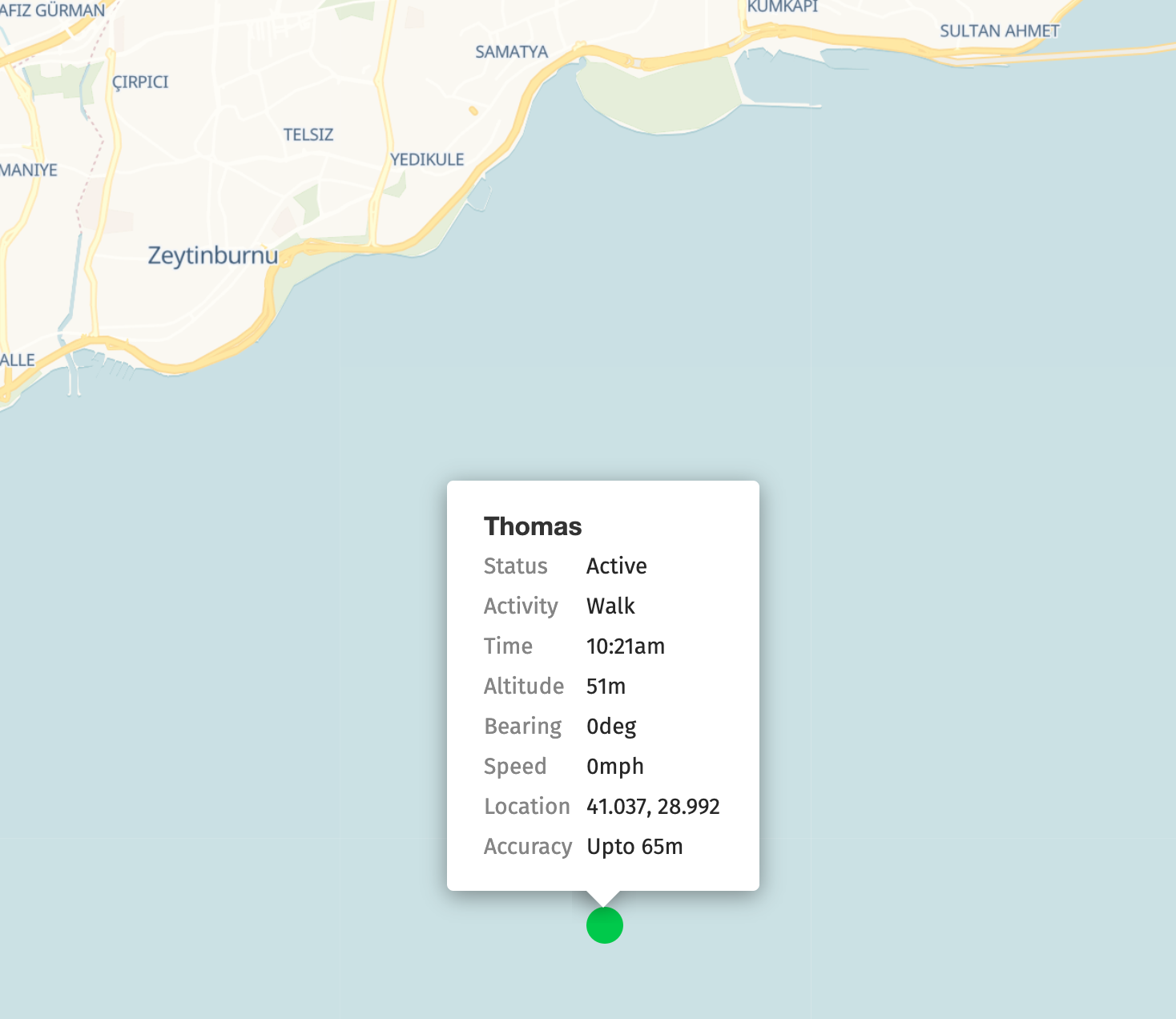
Though our algorithms made the divine intervention and filtered out bad GPS locations to summarize his run on land.
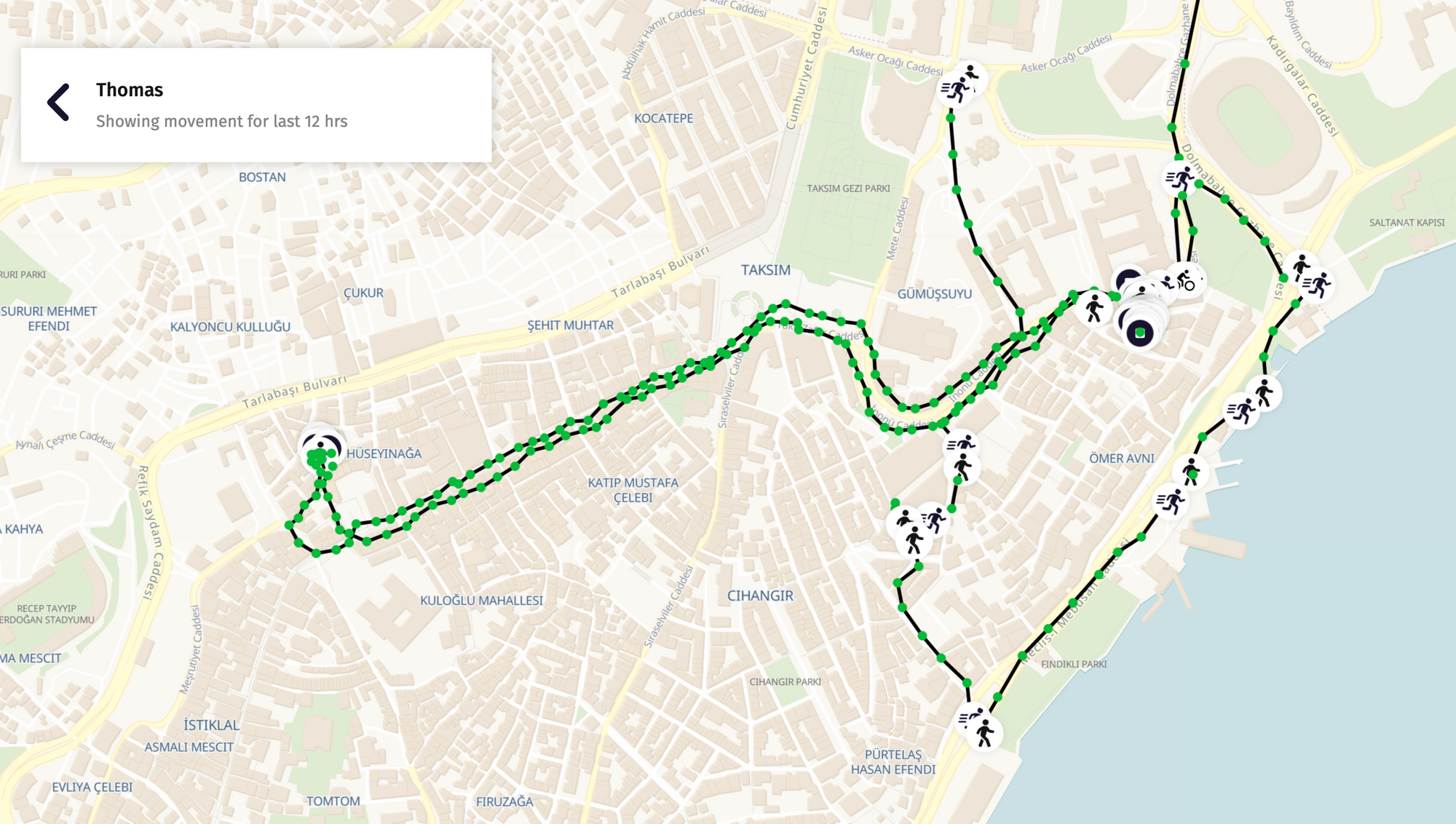
During the offsite, we debated whether airplane mode should mean disabling location tracking. One camp thought the OS allows for background location tracking to happen in airplane mode so we should use it. The other camp thought that users do not expect it to happen and it could inadvertently drain out battery on a long flight. As we deferred that decision to later, it was good to see HyperTrack track our flight path back from Istanbul to San Francisco with fairly impressive granularity.
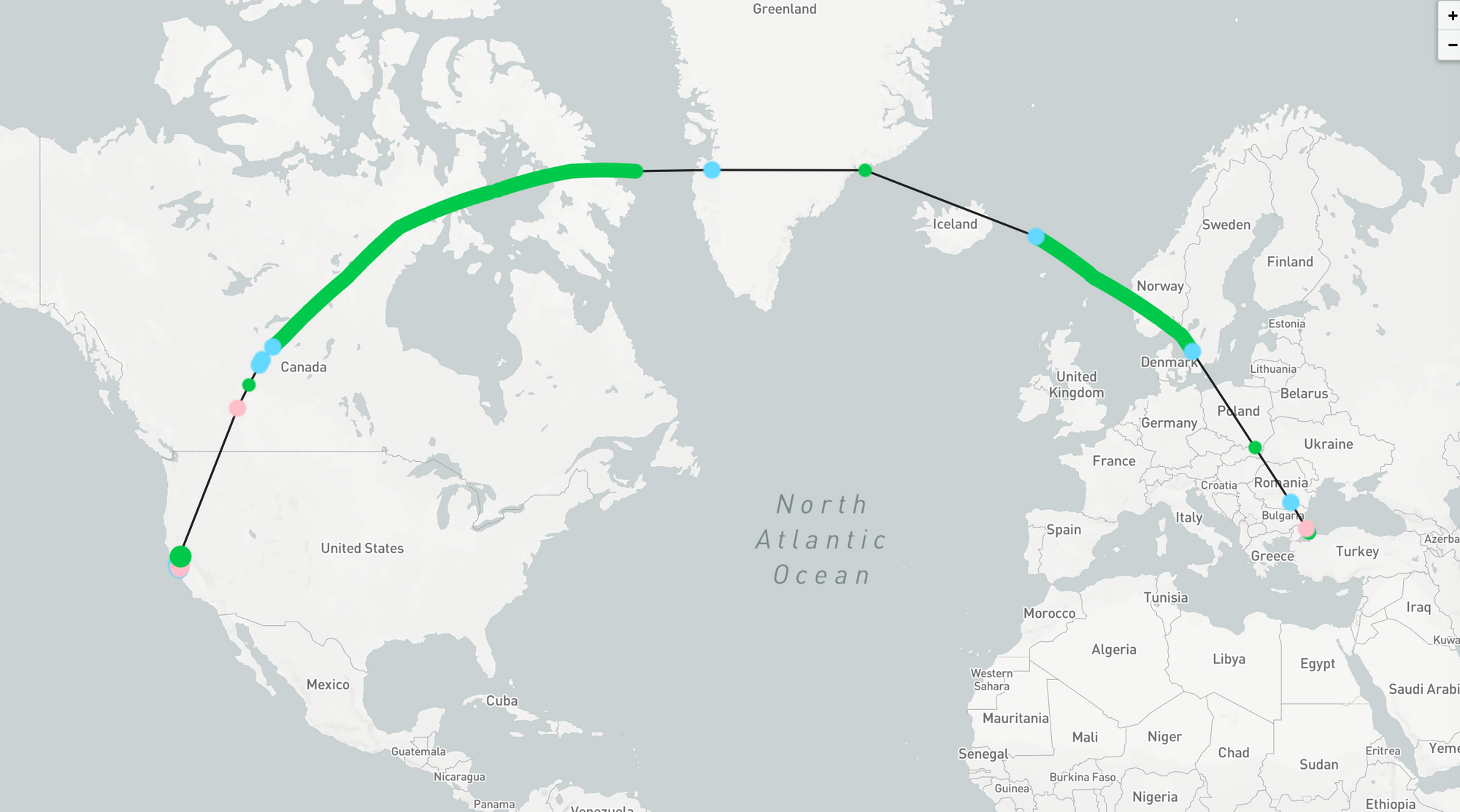
One of the locations over Norway shows 546 mph, that's 70% of the speed of sound for those who were wondering. My battery is conveniently charging on a Turkish Airlines seat back, though I swear the airline did not pay me to say this. Yet.
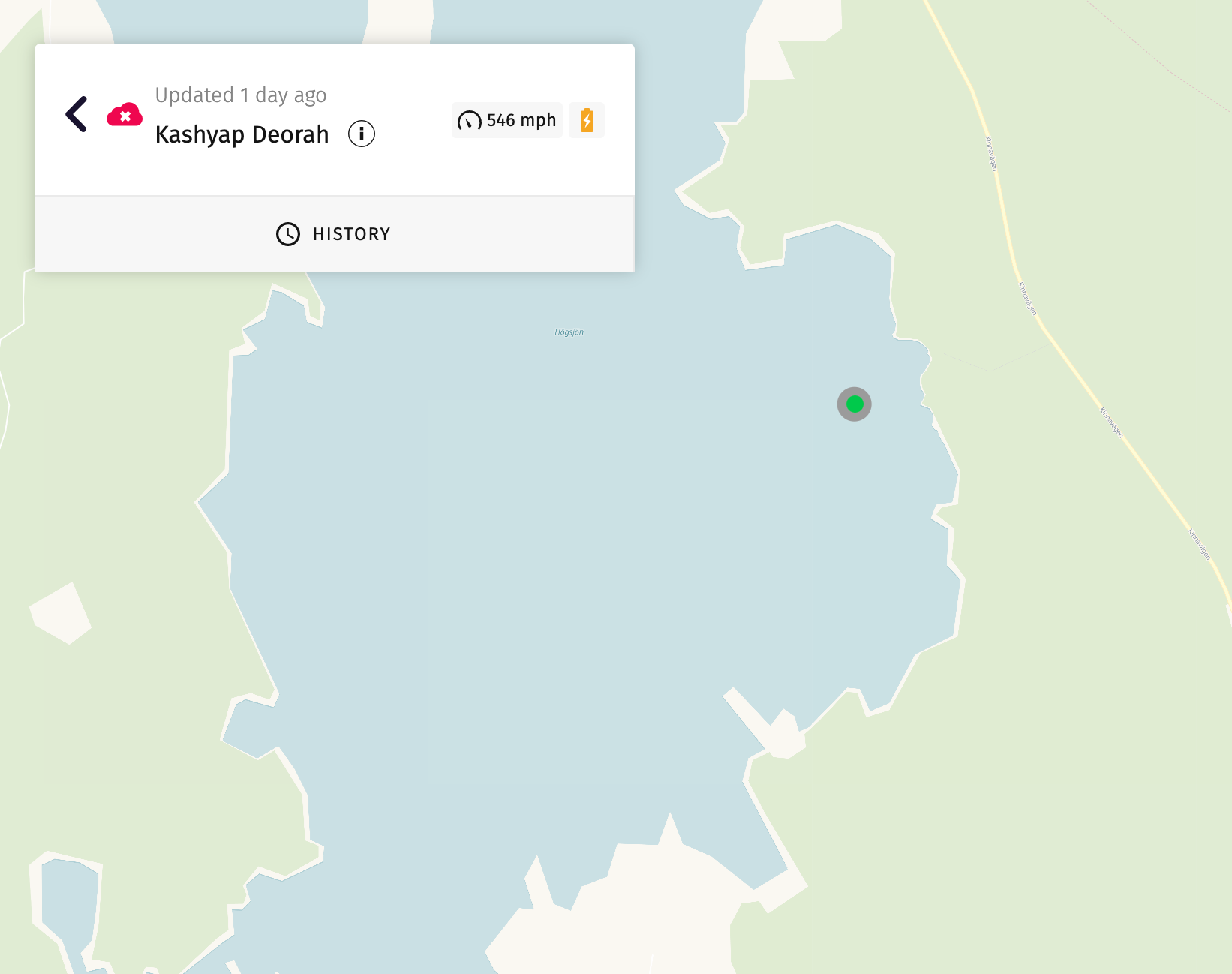
Now here we are, back to our sunny weekends with our families, staring at green dots on a map. We keep moving, painting the town green and discovering what shape we draw in this world.
Add HyperTrack to your work app (Android, iOS) to see how your business is taking shape in your world. Join us if you want to play a role in tracking the world's commerce.




